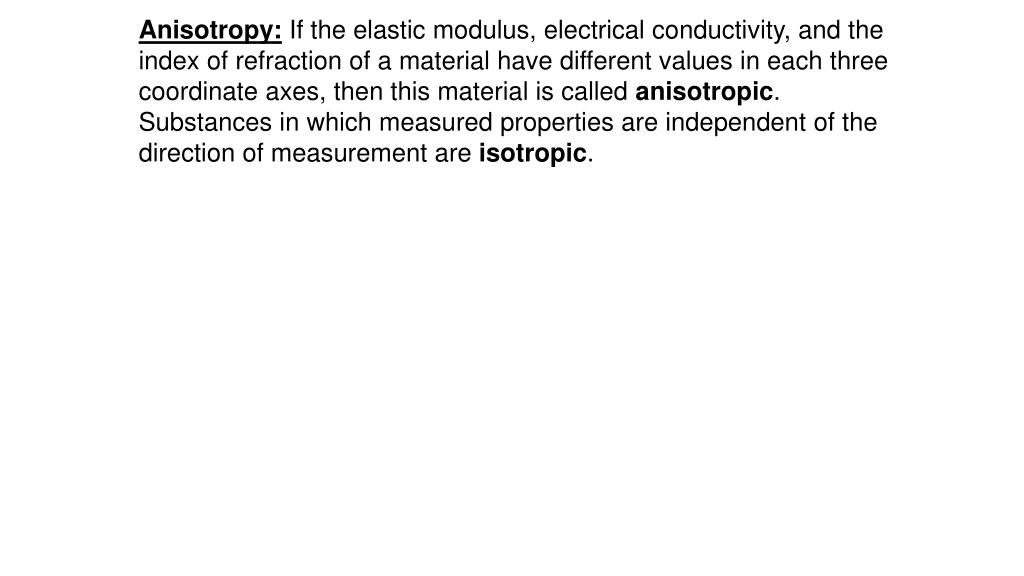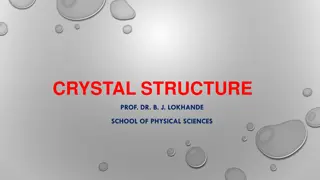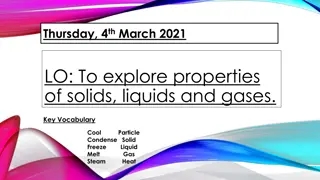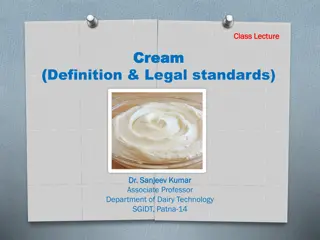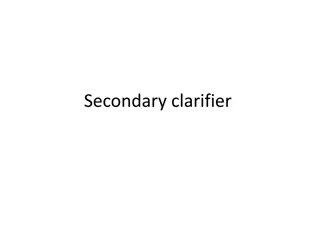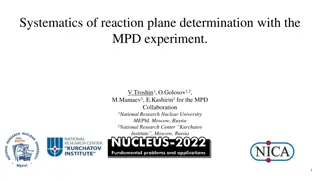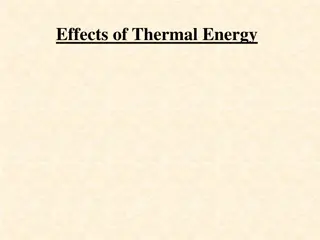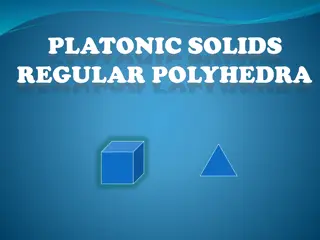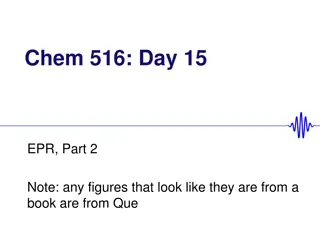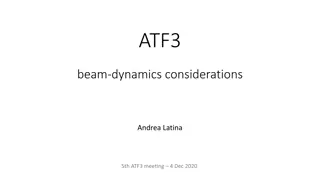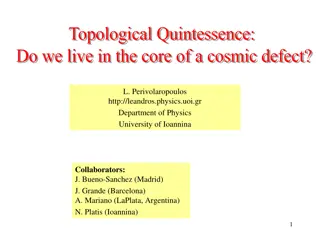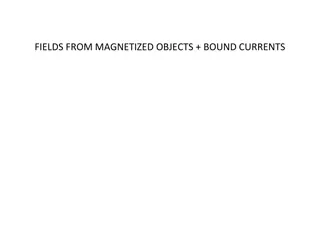Anisotropy and Imperfections in Solids
Anisotropy refers to materials with varying properties in different axes, while imperfections in solids like vacancies and self-interstitials impact their structure. X-Ray Diffraction and Bragg's Law are crucial in analyzing material properties.
Download Presentation

Please find below an Image/Link to download the presentation.
The content on the website is provided AS IS for your information and personal use only. It may not be sold, licensed, or shared on other websites without obtaining consent from the author.If you encounter any issues during the download, it is possible that the publisher has removed the file from their server.
You are allowed to download the files provided on this website for personal or commercial use, subject to the condition that they are used lawfully. All files are the property of their respective owners.
The content on the website is provided AS IS for your information and personal use only. It may not be sold, licensed, or shared on other websites without obtaining consent from the author.
E N D
Presentation Transcript
Anisotropy: If the elastic modulus, electrical conductivity, and the index of refraction of a material have different values in each three coordinate axes, then this material is called anisotropic. Substances in which measured properties are independent of the direction of measurement are isotropic.
X-RAY DIFFRACTION X-Ray Diffraction (k r lma) is used in the structure, morphology analysis of materials. It is mostly used in the determination of crystal structures. X-Ray is a form of electromagnetic radiation that have high energies and short wavelengths.
Braggs Law: It is an expression for the calculation of the interatomic distance, dhklbetween crystal atoms by using the X-Ray wavelength, and the , diffraction (k r lma) angle. Figure 3.20. QT SQ n + = n: the order of reflection = + = n d sin d sin d sin hkl hkl hkl
CHAPTER 4: IMPERFECTIONS IN SOLIDS Crystalline Defect: It is a lattice (kafes) irregularity which has one or more of its dimensions on the order of an atomic diameter. In nature, perfect materials with a perfect crystal structure (structure with no defects) do not exist. Usually, real materials that we use in our daily lives consist of various defects or imperfections.
CHAPTER 4: IMPERFECTIONS IN SOLIDS DEFECTS: 1. Vacancies (bo yer): A vacancy is the simplest of the point defects. A vacancy is a vacant lattice site from which an atom is missing. The equilibrium (denge) number of vacancies, Nvfor a material increases with Temperature. Figure 4.1
CHAPTER 4: IMPERFECTIONS IN SOLIDS DEFECTS: N: The total number of atomic sites (b lge) Qv: Activation Energy to form a vacancy k: The Boltzmann Constant, 1.38 10-23 J/atom-K Number of vacancies (Nv) Q v = exp N N v kT
CHAPTER 4: IMPERFECTIONS IN SOLIDS 2. Self-interstitial: A self-interstitial is an atom from the crystal that is crowded into an interstitial site. This kind of defect is also represented in Figure 4.1.
2. Impurities in solids: A pure metal with only one type of atom is not possible in real life. Usually metals contain more than one type of atom. The second type of atom which exists in a pure metal is usually called an impurity. The addition of impurity atoms to a pure metal will result in the formation of a solid solution or a new second phase. Solid solutions have a solute ( z nen) and a solvent ( z c ). Solvent: It is the compound that is present in the greatest amounts in the solid solution. Solute: It is the compound that is present in a minor concentration in the solid solution.
COMPOSITION OF AN ALLOY (BLEND) Alloy (Blend): It is a substance which is a mixture of more than two different materials. Example: Copper-Aluminium Alloy, Polymer-Clay Blend. The composition of an alloy can be expressed in terms of concentration. Concentration can be expressed in terms of weight percent or atom percent.
If an alloy contains A and B atoms; the concentration of A in weight %, CAis defined as; mA: The weight of Atoms A mB: The weight of Atoms B + B A m m Weight Percent of Atoms A (CA): It is the ratio of the weight of Atoms A to the total weight of Atoms A and B which is multiplied by 100. Atom Percent of Atoms A (C A): : It is the ratio of the number of Atoms A to the total number of Atoms A and B which is multiplied by 100. m A = 100 C A N NA: The number of Atoms A NB: The number of Atoms B A = ' 100 C A N N + A B
LINE DEFECTS (DISLOCATIONS) A dislocation is a linear or one-dimensional defect around which some of the atoms are misaligned. Figure 4.3.
LINE DEFECTS (DISLOCATIONS) Dislocations can be observed in crystalline materials using electron-microscopy techniques. Figure 4.6
